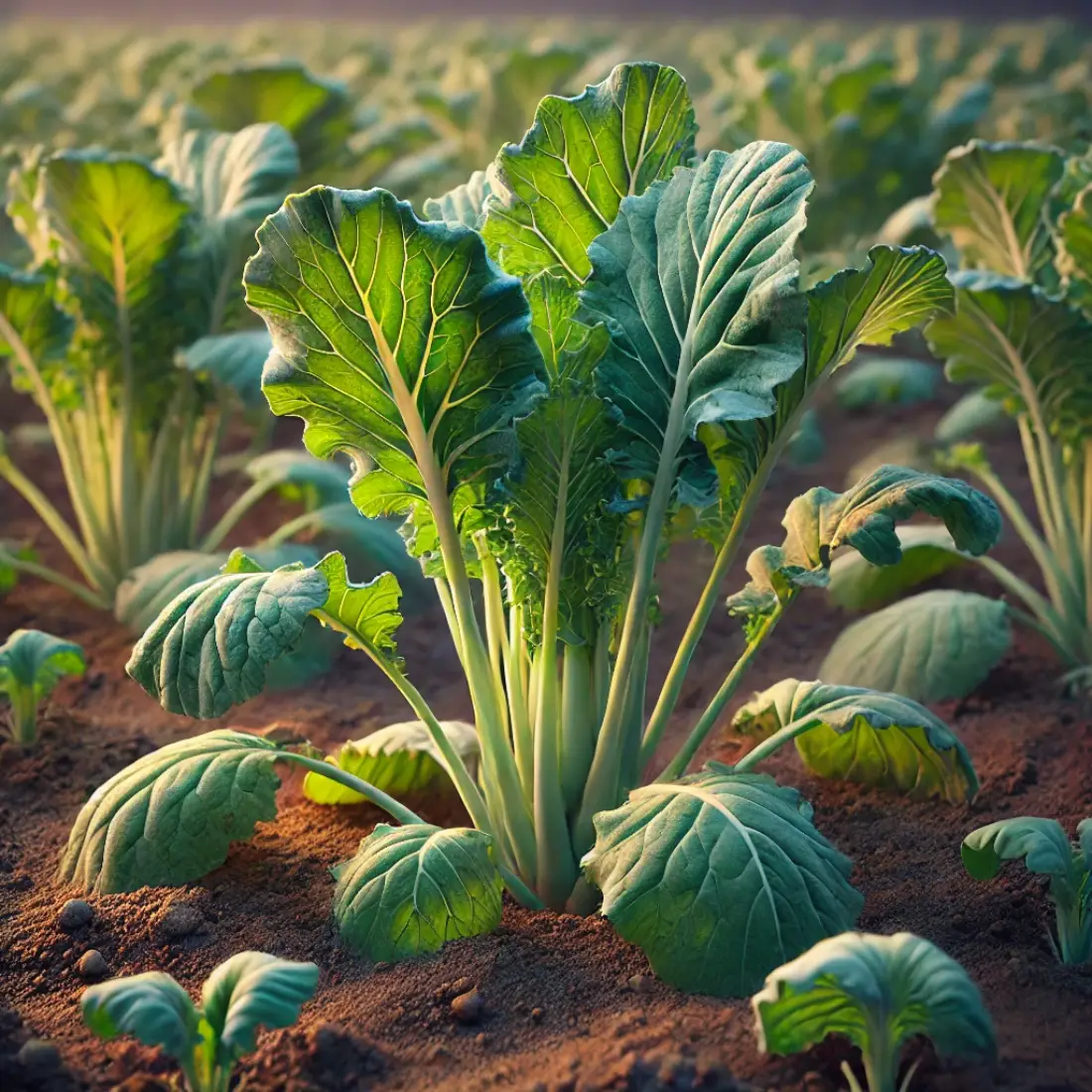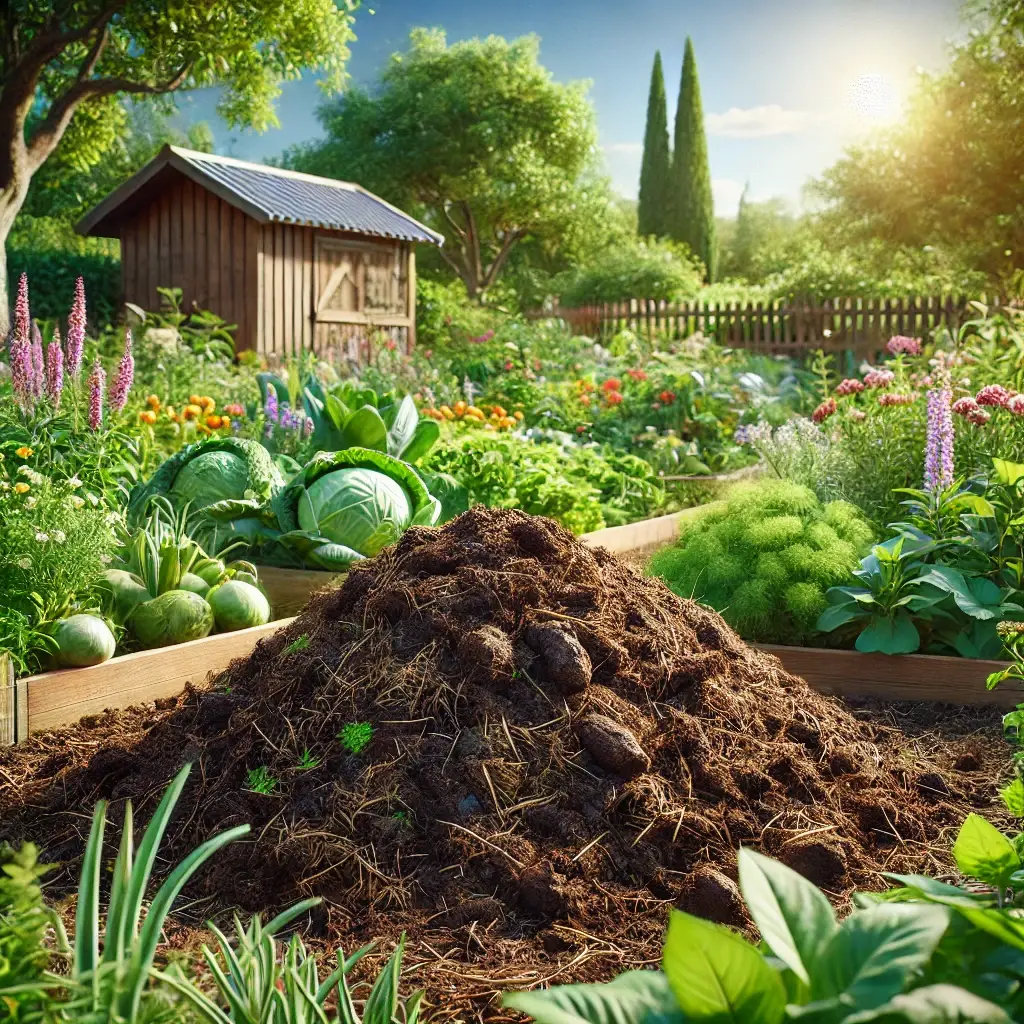Green manure cover crops are a powerful tool for enhancing soil health and fertility naturally. These crops are grown primarily to be incorporated back into the soil, where they decompose and release essential nutrients, particularly nitrogen.
This practice is a cornerstone of sustainable agriculture, helping to improve soil structure, increase organic matter, and reduce the need for chemical fertilizers. Beyond their role in boosting soil fertility, green manure cover crops also play a crucial part in preventing soil erosion, suppressing weeds, and retaining soil moisture.
- Green manure cover crops significantly enhance soil health and fertility.
- They provide organic matter, prevent soil erosion, and suppress weeds.
- Effective use of green manure cover crops can reduce the need for chemical fertilizers.
- Choosing the right cover crop species is crucial for optimal results.
Types of Green Manure Cover Crops
1. Leguminous Cover Crops
Leguminous cover crops are known for their ability to fix nitrogen in the soil, making them a popular choice among farmers and gardeners. These crops have a symbiotic relationship with nitrogen-fixing bacteria in their root nodules, which convert atmospheric nitrogen into a form that plants can readily use.

- Clover: Often used in pastures and gardens, clover is excellent at fixing nitrogen and providing ground cover.
- Vetch: A versatile legume that can thrive in various climates, adding substantial nitrogen and organic matter to the soil.
- Alfalfa: Deep-rooted and perennial, alfalfa is great for both soil health and forage, with the added benefit of breaking up compacted soil.
2. Non-Leguminous Cover Crops
Non-leguminous crops don’t fix nitrogen, but they excel at producing biomass, suppressing weeds, and improving soil structure. They are often used to add organic matter and protect the soil surface.

- Rye: A hardy cereal crop that grows quickly, rye is ideal for reducing erosion, improving soil structure, and suppressing weeds.
- Oats: Known for their rapid growth, oats provide excellent ground cover and are easy to incorporate into the soil after they die off in the winter.
- Buckwheat: A fast-growing crop that is particularly effective at suppressing weeds and attracting beneficial insects. Buckwheat’s ability to grow in poor soils makes it an excellent green manure option.
3. Brassicas
Brassicas are a group of plants known for their deep-rooted systems, which help break up compacted soils and improve soil aeration. They are often used in rotation with other crops to enhance soil health.

- Mustard: A quick-growing brassica that provides excellent weed suppression and soil conditioning. Its roots can help break up heavy soils, and it has natural biofumigant properties that suppress soil-borne diseases.
- Radish: Particularly daikon radish, is valued for its ability to penetrate deep into the soil, breaking up hardpan layers and improving soil drainage. Radish decomposes quickly, leaving large channels in the soil that enhance water infiltration and root growth for subsequent crops.
How to Select the Right Green Manure Cover Crop
Choosing the right green manure cover crop is crucial for maximizing its benefits. The first consideration is your climate and soil type. Some cover crops, like rye and vetch, thrive in cool climates, while others, such as buckwheat and cowpeas, prefer warmer conditions.
Soil type also plays a role; for example, alfalfa and radish are excellent for breaking up compacted soils, whereas clover and oats are better suited for lighter, well-drained soils.
Next, consider your crop rotation plan. Integrating green manure crops into your rotation can help replenish nutrients and reduce pests. For instance, planting a leguminous crop like vetch after a heavy feeder like corn can restore nitrogen levels in the soil.
Finally, align your choice with your specific goals. If nitrogen fixation is a priority, legumes such as clover or vetch are ideal. For weed suppression, fast-growing crops like buckwheat or mustard are effective. If erosion control is needed, consider deep-rooted crops like rye or radish.
Implementing Green Manure Cover Crops
Implementing green manure cover crops effectively involves careful planning, from planting to incorporation. Here’s a step-by-step guide to get the most out of your cover crops.
1. Planting Techniques
The timing of planting is crucial. Most cover crops should be planted during the off-season when your main crops are not in the ground. For example, winter cover crops like rye or vetch should be sown in late summer or early fall. Meanwhile, summer cover crops like buckwheat should be planted after the last frost.
- Sowing Methods: You can plant cover crops by broadcasting the seeds over the soil surface or using a seed drill for more precise placement. Ensure good seed-to-soil contact by lightly raking or rolling the soil after broadcasting.
2. Management Practices
Once planted, cover crops generally require minimal management. However, watering may be necessary in dry conditions to ensure germination and early growth. Fertilization is usually unnecessary since the main goal is to enhance the soil naturally. Regular monitoring is important to keep an eye on weed pressure; however, most cover crops suppress weeds effectively due to their dense growth.
3. Termination and Incorporation
The timing of cover crop termination is critical. Cover crops should be terminated before they set seeds to prevent them from becoming weeds. Common methods include mowing, rolling, or tilling.
- Incorporation into Soil: After termination, the green manure must be incorporated into the soil. Tilling the cover crops under allows them to decompose, releasing nutrients back into the soil. This should be done several weeks before planting your main crops to allow time for the organic matter to break down.
Common Challenges and Solutions with Green Manure Cover Crops
While green manure cover crops offer numerous benefits, they also come with challenges. Understanding these and how to address them can ensure successful implementation.
1. Timing Issues
One common challenge is poor timing, either planting too late or incorporating too early. If cover crops are planted too late, they may not establish well before winter, reducing their effectiveness. Conversely, if incorporated too early, they may not add sufficient organic matter to the soil.
- Solution: Plan planting and incorporation carefully, aligning with your region’s growing seasons. Use local agricultural calendars or consult extension services to optimize timing.
2. Pest and Disease Concerns
Some cover crops can attract pests or harbor diseases that might affect subsequent crops. For example, brassicas like mustard can attract flea beetles.
- Solution: Rotate cover crops with main crops to break pest and disease cycles. Select cover crops that are less prone to the same pests or diseases as your main crops.
3. Overwintering Problems
Certain cover crops, if not properly managed, may survive winter and become weeds in the spring.
- Solution: Choose cover crops that winter-kill in your climate, or ensure timely termination in late fall or early spring to prevent them from reseeding.
FAQs about Green Manure Cover Crops
What are the best green manure crops for beginners?
For beginners, clover, buckwheat, and oats are excellent choices due to their ease of growth, rapid establishment, and minimal maintenance requirements.
How long should green manure crops grow before being incorporated?
Most green manure crops should be allowed to grow for 6-8 weeks before being incorporated into the soil. This allows them to develop sufficient biomass and root systems to improve soil structure and fertility.
Can green manure cover crops be used in home gardens?
Yes, green manure cover crops can be highly beneficial in home gardens. They improve soil health, suppress weeds, and reduce the need for chemical fertilizers. Vetch and radish are popular options for small-scale gardens.
Do green manure crops attract pests?
Some green manure crops can attract pests, but this is typically manageable with proper crop rotation and selection. For instance, mustard may attract flea beetles, but rotating with non-brassicas can help mitigate this issue.
Is there a risk of green manure crops becoming weeds?
There is a risk if green manure crops are allowed to go to seed. To prevent this, they should be terminated before flowering or seed setting. Selecting winter-kill crops like oats can also reduce this risk.
How do I incorporate green manure crops into the soil?
Green manure crops can be incorporated by mowing them down and tilling the biomass into the soil. This process adds organic matter and nutrients to the soil, which improves fertility and structure.
Can I plant my main crops immediately after incorporating green manure?
It’s best to wait 2-3 weeks after incorporating green manure crops before planting your main crops. This allows the organic matter to decompose and prevents potential issues like nitrogen immobilization.
Are green manure cover crops suitable for all soil types?
Yes, there are green manure crops suitable for all soil types. For example, alfalfa is ideal for breaking up compacted soils, while clover is better for lighter, well-drained soils.
Can I mix different green manure crops together?
Absolutely! Mixing different green manure crops can provide a range of benefits, such as combining nitrogen fixation from legumes with the weed suppression and biomass production of non-leguminous crops.
How do green manure cover crops improve soil health?
Green manure cover crops improve soil health by adding organic matter, increasing microbial activity, fixing nitrogen (in the case of legumes), suppressing weeds, and preventing erosion. They also improve soil structure by enhancing aeration and water retention.









